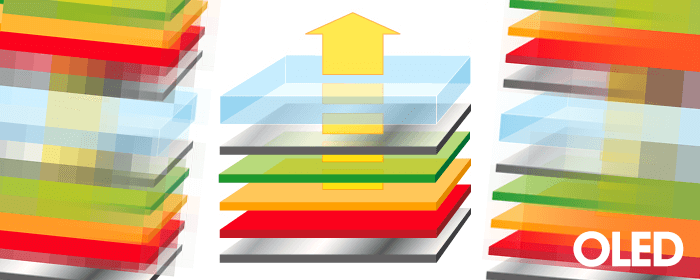
OLED: Organic Light-Emitting Diode
OLED—any idea what the acronym stands for? Well unless you’re a Jeopardy contestant or very techy, you probably will need some help with the definition. OLED (organic light-emitting diode) is a light-emitting diode (LED) in which the emissive electroluminescent layer is a film of organic compound that emits light in response to an electric current. Got it? Good. So, what’s so special about OLEDs? Light-emitting diodes (LEDs) or liquid crystal displays (LCDs) can provide brighter, crisper displays on electronic devices and use less power than conventional incandescent bulbs. LEDs, do many different jobs and are found in many kinds of devices. Among other things, they form numbers on digital clocks, transmit information from remote controls, help watches display in the dark and tell someone when her appliances are turned on. All together, they can form images on a very large television screen or illuminate a traffic light. So, why the lesson on OLEDs?
It is rumored that Apple has “plans to launch a 5.8-inch iPhone featuring rigid AMOLED display panels in 2018 or even earlier in 2017,” DigiTimes believes, as noted by Motley Fool. According to DigiTimes reporting, it is anticipated that as many as 50 million of those devices might move in their first year if the rumor becomes fact. Moreover, Samsung would supply the first batch of OLED panels with other Apple suppliers working in tandem later on. The Motley Fool believes this could represent the second-generation “iPhone Pro.” While it is certain that Apple will eventually migrate the iPhone lineup to power saving OLED, the idea that they may reach even further into “phablet” territory is somewhat unbelievable. DigiTimes reports that this kind of move would give Apple iOS devices at no few than seven different physical screen dimensions — 4, 4.7, 5.5, 5.8, 7.9, 9.7, and 12.9 inches. Yes, my friend, OLED lives on.
Categories
- Articles (49)
- CES 2013 (4)
- Customer Testimonies (11)
- News (37)
- PD Exclusive (11)
- Repair Assistance (16)
- Reviews (5)
- ScrewMat™ (3)
- Shopping (3)
- Tech Tip (5)
- Uncategorized (38)


